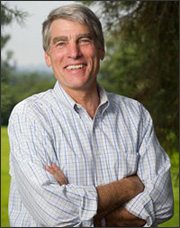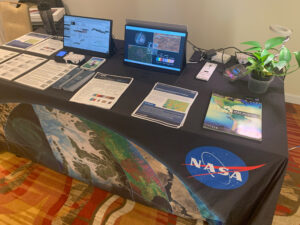Source: Congressional Record

On September 21, 1966, Secretary of the Interior Stewart Udall announced the commencement of Project EROS—Earth Resources Observation Satellites. The goal of Project EROS was to create a program responsible for mapping the characteristics of the surface of the Earth, thereby helping us better understand Earth’s natural resources and changing climate.
In the years following, the Department of the Interior, through the U.S. Geological Survey and partnering with the National Aeronautics and Space Administration, established the EROS Program, and on July 23, 1972, launched the first Landsat satellite responsible for Earth surface imaging. Over the last 40 years the United States launched six more Landsat satellites, ensuring continuous observation and creating a national archive of natural resource information. The next Landsat is scheduled to be launched in 2013.
Today Landsat is crucial, not only to environmental research and study, but to national policy and decision makers at all levels. Landsat collects data from across the United States from the forests of Washington and Oregon, to the changing wetlands and waterways of coastal Louisiana. It also collects data globally, mapping, for example, the arid regions of Saudi Arabia and Mexico and the shrinking Aral Sea and Lake Chad. Using the information gathered by these satellites, researchers are able to catalogue and compare changes in the land due to urbanization, deforestation, population growth, climate change, and natural disasters. This kind of analysis is critically important to local governments, farmers and ranchers, land managers, and many other decision makers.
For example, my home State of Colorado has been deeply affected by wildfires this year. Drought, climate change, and fire suppression have combined to make this one of the most destructive wildfire seasons in Colorado history. Landsat satellites collect data measuring water consumption by plants, bark beetle infestation, forest health, fuel loads, and even environmental recovery data from these damaging fires. Given this information, we can better combat wildfires both on the front lines and through our decisions here in Washington.
Not only does Landsat data benefit Colorado decision makers, but the satellites themselves have a strong Colorado pedigree. Ball Aerospace, located in Boulder, CO, is a key contributor to the development and progress of the Landsat program. Ball developed and constructed several vital components of the Landsat mission, most notably the Operational Land Imager, which allows for detailed imaging and a complete scan of the entire globe every 16 days.
I want to congratulate all those who have been associated with the Landsat legacy over the past 40 years on fulfilling Secretary Udall’s vision so ably. Their tireless dedication has been a true benefit to all Americans and the world.
For more information:
+ Congressional Record, July 23, 2012

Landsat & LCLUC: Science Meeting Highlights
Outreach specialists from the Landsat Communications and Public Engagement team participated in community engagement efforts at the joint NASA and University of Maryland Land Cover Land Use Change (LCLUC) meeting.





